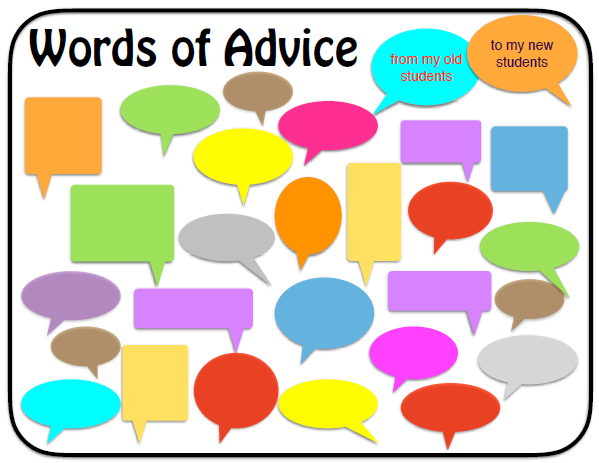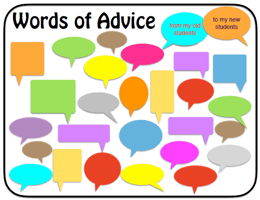By: Melissa Hughes, Ph.D. on May 23rd, 2017
Tips to Engage Students While Closing Down Your Classroom and Prepping for the Fall
Lessons/Activities/Templates | Featured Topics: Student Engagement | Featured Topics: Lessons and Activities
As another school year comes to a close, let me be among the first to say, “There’s no tired quite like end-of-the-year-teacher tired!” I get it. The end of the school year is exhausting and maybe even a bit emotional as you say goodbye to your students for the summer. Between finalizing student records, completing report cards, and closing up your classroom, the last few weeks are hectic. But there are a few simple strategies that may help you make the most of the time you spend ending the year so that it is easier to begin the year when you return in the fall.
Two Copy Boxes
Find two copy paper boxes and mark one “Summer Work” and the other “Welcome Back.” Put everything you’ll need when you return that first day in the fall in the "Welcome Back" box. Think about those supplies you’ll need to get started opening your classroom before you can begin arranging furniture or putting up bulletin boards (i.e., stapler, scissors, request forms, etc.) The faster you can get your personal space set up, the less overwhelming it feels and the faster you can get to the rest of the classroom.
Next, put everything you want to take home for the summer in the “Summer Work” box. Include your class list for the following year and everything that you’ll need that first week of school such as an open house packet, student forms, etc. It’s much easier to launch the new year with creativity when you give yourself the time to be creative. The week before school starts doesn’t provide for that kind of time.
Enlist Student Help
Students love to help you, and you can reinforce essential skills as they do. Younger children can sort and count textbooks. Provide post-it notes for them to mark the number of each to help you with inventory reports. Older children can sort your classroom library according to genre, topic or reading level depending on how you have them organized. Sponges and buckets fit in the hands of every child and you’ll be amazed at how much they will enjoy helping. Post a “Supplies List” on the board so that as you are cleaning, purging and organizing, you and your students can write down things that are worn out, used up, or simply missing. That list will come in handy as you shop the clearance sales and prepare your supplies list during the summer.
Bulletin Boards
Returning in the fall to four huge bare walls can be a little daunting. Consider creating one bulletin board before you leave that displays some of the fun projects you did with your class. Title the board “Lots of Learning Ahead.” Cover the entire board with newspaper (use colored push pins instead of staples.) Then when you return in the fall, simply take the newspaper down and your first bulletin board is finished. You’ll give your new students a glimpse at some of the things they will experience and communicate that you are proud of your students’ accomplishments. You can also make this board interactive with your new students. Ask them to write their name on a post-it note and vote for the one that is most interesting to them. You could also use this strategy with any bulletin board that you know you’ll be putting up in the fall (i.e., job chart, attendance board, morning meeting, etc.).
The new students you meet in the fall are likely to arrive with a mixed bag of emotions. Engage your current students in sharing their words of advice to the new students for a successful school year. Enlarge and print the Words of Advice PDF to poster size, or create your own on a piece of butcher paper. Provide markers or crayons and time for students to add their thoughts. You may also decide to create a Welcome Back bulletin board with it.
Reflection
Most teachers have a long list of units to revise or create, project ideas that they want to try, or professional development goals to think about over the summer. Take a few minutes to reflect on the current year and write down your thoughts. It doesn’t have to be a long list. It can be as simple as a few questions:
- What was your favorite lesson or project this year?
- What lessons were total disasters? Why?
- What was your biggest frustration this year?
- What was your biggest victory this year?
- What do you want to do more of next year?
- What do you want to do less of next year?
You owe it to yourself and to your new group of students to devote 30 minutes to this exercise before you turn off the lights for the final time this year.
Join Dr. Melissa Hughes and STEM Fuse this July for a two-part professional development webinar series, hosted by VariQuest, applying the fundamental elements of whole-brain instruction with project-based learning.
About Dr. Hughes
 Dr. Melissa Hughes is the founder of The Andrick Group and the author of the book, Happy Hour with Einstein. She develops and delivers professional development opportunities for educators across the country based upon whole-brain thinking and learning for deeper cognition and increased student engagement.
Dr. Melissa Hughes is the founder of The Andrick Group and the author of the book, Happy Hour with Einstein. She develops and delivers professional development opportunities for educators across the country based upon whole-brain thinking and learning for deeper cognition and increased student engagement.



